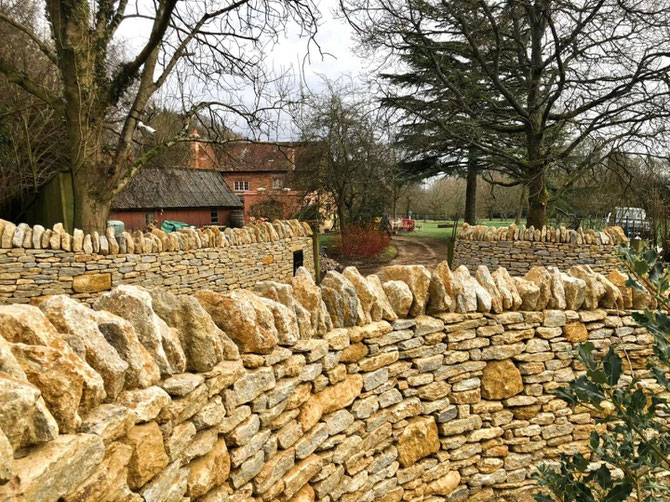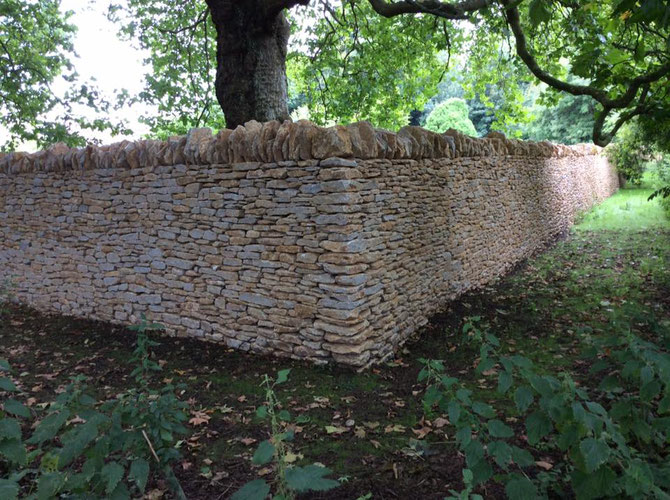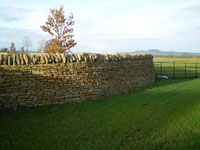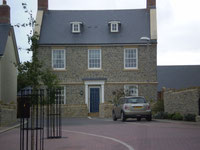
Coping stones, and cock and hens
Coping stones for walls are essential. This is not only aesthetic, but also practical, such as weighting the top of the wall down, or protecting it from rain.
There are numerous different methods depending on local tradition, and or practicalities.
Cock and hens add weight to a drystone wall, or a garden wall, creating stability, also creating a barrier to prevent it being climbed. They also look impressive, and are a practical method of often using bulkier stone that would not sit well within the wall itself.
Another method of finishing a wall is using a spill stone. The spill stone is flat, and hangs over the top of the wall on both sides. If the spill stones are small, and do not cover the top completely, they can be capped off with a with a line of larger rectangular stones on top, creating stability, and covering gaps.
Leaving a wall without coping looks unfinished, and is unfinished. The top stones will slip if children or animals climb the wall. Some walls are finished off with cement. The issue with capping a free standing wall with cement, is that the cement does not allow for movement, and so the wall will become unbalanced over time.
There are lots of different ways of doing the coping, depending what you are looking at achieving.
Speak to Jimmy on 01963 364200 to discuss the design of the wall, and what is required.
Price of cock and hens
Price of cock and hens - £35 per linear metre + VAT (approximately 7 linear metres to a tonne)


 Stalbridge Quarries
Stalbridge Quarries






